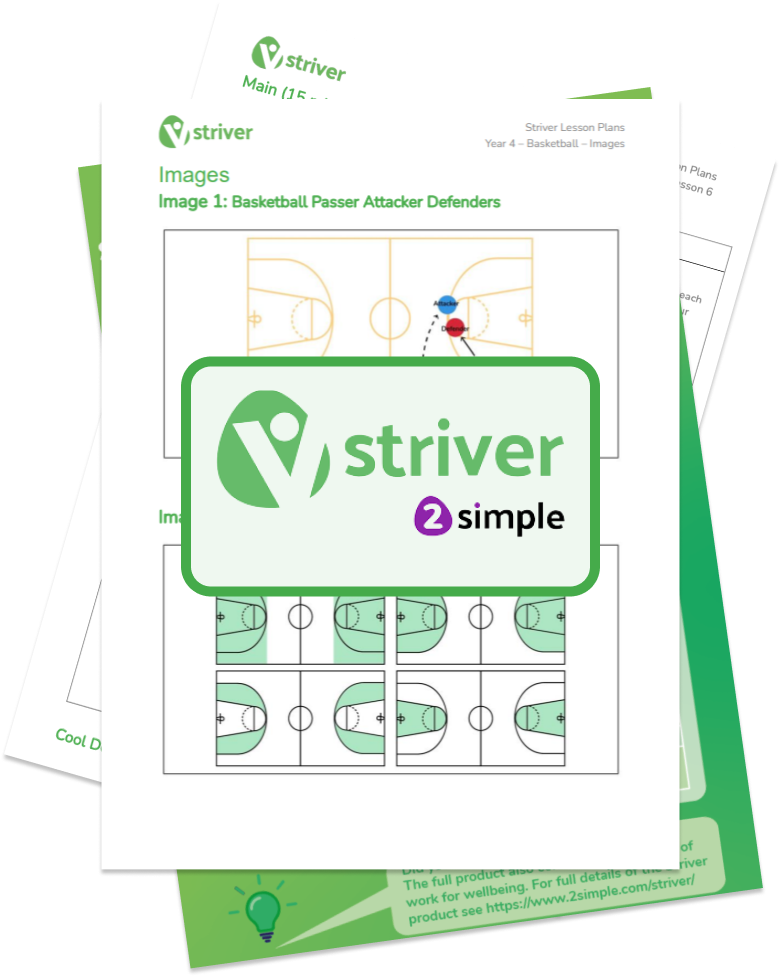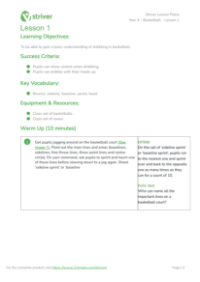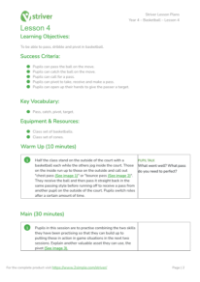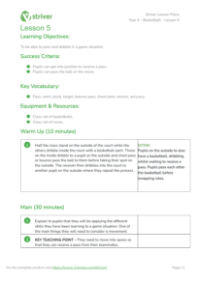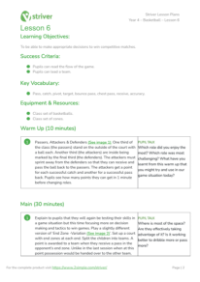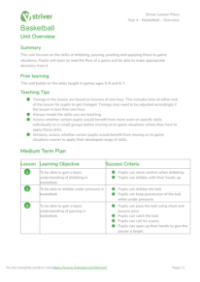Basketball - Lesson 2
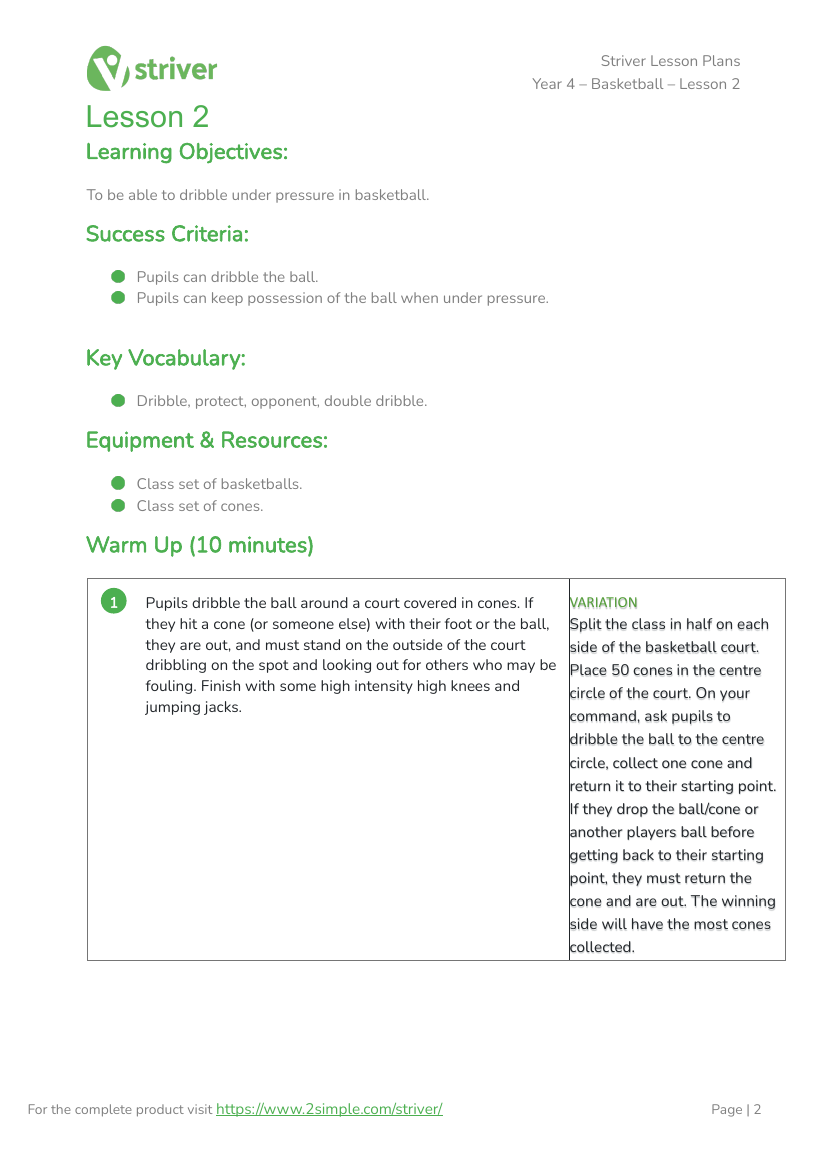
Physical Education Resource Description
In the second lesson of a basketball series for Year 4 students, the focus is on developing the skill of dribbling under pressure. The learning objectives are clear: pupils should be able to dribble the ball and maintain possession when faced with defensive pressure from opponents. The success criteria are equally straightforward, ensuring that students can demonstrate both dribbling the ball and keeping it under control. Key vocabulary for the lesson includes 'dribble', 'protect', 'opponent', and 'double dribble'. Essential equipment for the lesson includes a class set of basketballs and cones. The warm-up consists of a dribbling exercise around a court filled with cones, where pupils must avoid contact with the cones and other players. A variation of this warm-up involves a competitive element where students dribble to collect cones from the centre circle, enhancing their agility and control.
During the main part of the lesson, which lasts for 30 minutes, pupils build upon their previous dribbling experience with a focus on technique and awareness of the opponent. Key teaching points include keeping the dribble low to make it harder for opponents to steal the ball and using the hand furthest from the defender to dribble. Students are encouraged to practice dribbling with both hands to become proficient in switching hands when necessary, avoiding a double dribble. Partner drills and a game of 'Knockout' where students attempt to dislodge each other's balls while maintaining control of their own, provide practical application of these skills. To cater to different skill levels, extensions include using alternate hands or focusing on using the weaker hand for dribbling. The cool down activity involves passing the ball down a line of pupils and discussing which aspects of dribbling they find most challenging, encouraging reflection on their technique and areas for improvement.
